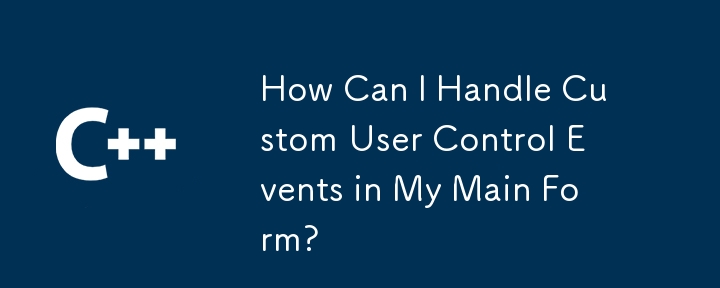Found a total of 10000 related content

Building a Custom HTML5 Video Player Interface
Article Introduction:To create a custom HTML5 video player, you need to set up an HTML structure, implement control interaction and design a CSS style. 1. Set the infrastructure: Use tags and custom control areas, add necessary attributes to ensure compatibility; 2. Implement control interaction: control playback/pause through JavaScript listening button click events, and monitor the timeupdate event update progress bar and time display; 3. Design custom styles: use CSS to hide native controls and beautify the player's appearance, including style adjustments of buttons, progress bars and other elements.
2025-07-14
comment 0
530
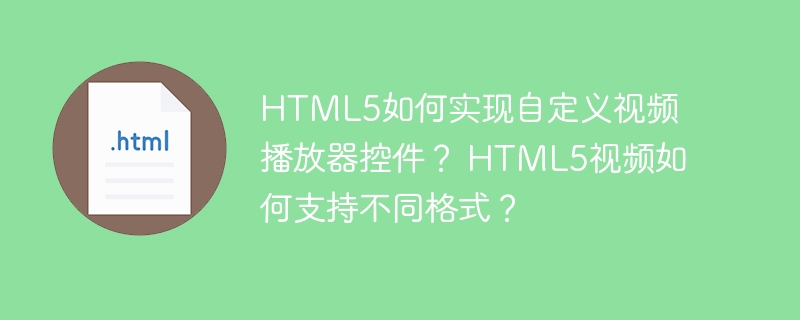

How to create custom controls for HTML5 video player?
Article Introduction:HTML5 video player can be customized. The specific methods are: 1. Hide the native controls and remove the controls attributes of the tags; 2. Use HTML to create custom controls such as play/pause buttons, progress bars, volume control, full-screen buttons and time display; 3. Take over the video control logic through JavaScript to realize functions such as playback, pause, jump, volume adjustment, etc.; 4. Use CSS to beautify the appearance of the control and overwrite the default style; 5. Pay attention to compatibility issues, such as full-screen support on the mobile terminal, obtaining the duration after loading metadata, and providing load failure prompts.
2025-07-14
comment 0
985

HTML5 video player custom controls example
Article Introduction:Why do you need to customize video controls? Because the browser comes with control styles and functions are limited, customization is required when unifying the website style, adding custom functions, or implementing a consistent UI on the mobile side. 2. How to build the infrastructure? Use the video tag and button to build a basic HTML structure, and place the controls in the video parent container for layout, and use range type input to implement the progress bar and volume bar. 3. How to implement key functions? Click events through JavaScript and operate video elements, including play/pause switching, progress bar synchronization and jump, mute buttons and volume control. 4. Things to note about style and compatibility? Use CSS Positioning Controls to be above the video, when you click
2025-07-07
comment 0
229
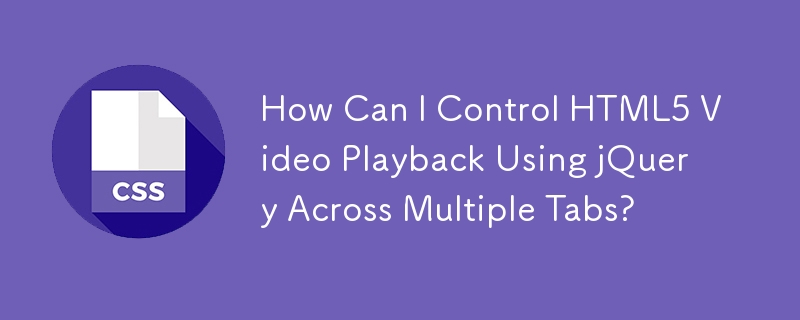
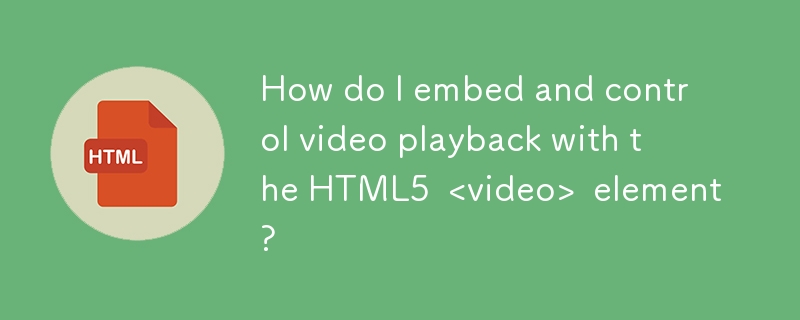

What is the Video API, and how do I use it to control video playback using JavaScript?
Article Introduction:How to use JavaScript to control web video playback? The answer is through HTML5 elements and their related methods and properties. The specific steps are as follows: 1. Basic settings: Use tags with ids and select multiple video sources to enhance compatibility; 2. Control playback: Call play(), pause() through JavaScript, set currentTime, volume and muted properties to achieve playback control; 3. Handle events: listen to play, pause, ended and other events to respond to changes in video status; 4. Custom controls: build UI elements such as play/pause buttons, and handle loading status and barrier-free support; 5. Pay attention to browser restrictions, such as muted automatic playback strategy
2025-06-22
comment 0
563
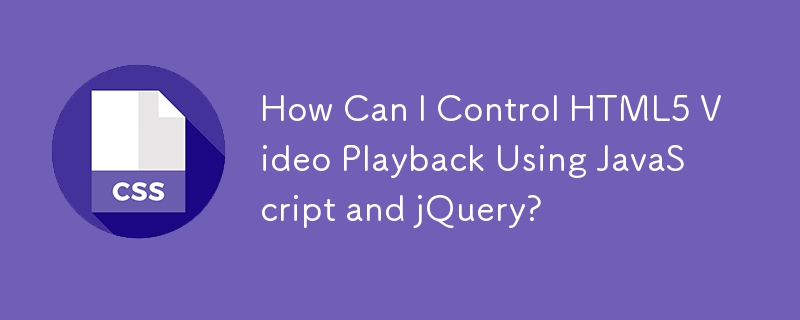

How to control the video playback speed in HTML5? How to achieve full screen of video in HTML5?
Article Introduction:In HTML5, the playback speed of video can be controlled through the playbackRate attribute, which accepts the following values: less than 1: slow playback equals 1: normal speed playback greater than 1: fast playback equals 0: pause in HTML5, the video full screen can be realized through the requestFullscreen() method, which can be applied to video elements or their parent elements.
2025-04-06
comment 0
1117

HTML5 Video and Audio: The Markup - SitePoint
Article Introduction:Detailed explanation of HTML5 video and audio tags: Building a responsive video player
This article is excerpted from the book "HTML5 & CSS3 for the Real World, 2nd Edition" co-authored by Alexis Goldstein, Louis Lazaris and Estelle Weyl. This book is available in major bookstores around the world, and you can also purchase the e-book version here.
Core points
HTML5's video and audio tags allow for embedded video and audio elements directly in HTML code, without the need for external plug-ins or players.
HTML5 video and audio tags contain multiple attributes to control the behavior of these elements, such as autoplay
2025-02-18
comment 0
365

How to set up a video cover in HTML5? How to play HTML5 videos in loop?
Article Introduction:HTML5 Video Settings and Playback Control Settings Video Cover: Specify the cover image through the poster property or JavaScript setPoster() method. Implement video loop playback: Enable loop playback through the loop property or the JavaScript loop property.
2025-04-06
comment 0
864
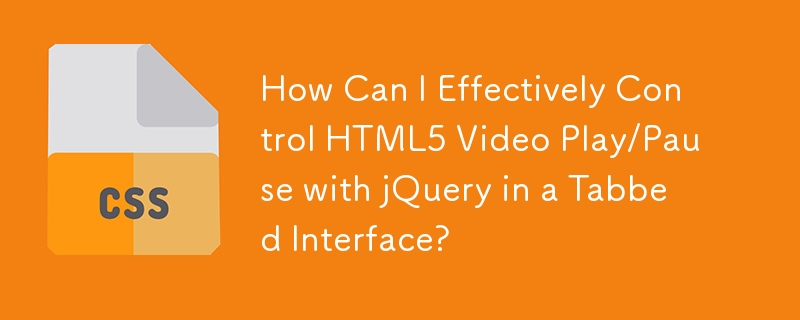

How to control HTML5 video and audio playback using JavaScript?
Article Introduction:To control HTML5 video and audio playback using JavaScript, master the following key operations to achieve basic control. 1. Start or pause play can be achieved through the .play() and .pause() methods, and it is recommended to trigger through user interaction to be compatible with mobile browsers; 2. Control the volume and set the value from 0 to 1 through the volume attribute, and switch by setting the muted attribute to true or false; 3. Jump to a specific time to play, you can use the currentTime attribute, which supports direct assignment or increase or decrease the current time, and it is recommended to add error handling; 4. Listen to the playback status changes can be achieved through events such as play, pause, ended and timeupdate.
2025-06-24
comment 0
760

Building a Custom Video Player with HTML5
Article Introduction:Remove the default controls and create a custom UI: Use tags without controls attributes to add custom buttons and sliders; 2. Use JavaScript to bind functions: play/pause, progress update, drag and jump, volume adjustment and full screen through HTML5Media API; 3. Optimize experience: Set the maximum value of the progress bar when monitoring metadata loading, add IntersectionObserver, mobile adaptation and barrier-free support to improve compatibility and usability, and you can build a lightweight cross-platform video player without a third-party library.
2025-07-29
comment 0
515

Embedding Multimedia with HTML5 Audio and Video Tags
Article Introduction:To insert audio and video into a web page, use HTML5 and tags. 1. When inserting audio, use the tag and add the controls attribute to display the controls; 2. To be compatible with different browsers, different formats can be specified through multiple tags; 3. Be cautious when playing automatically, and it is recommended to add the muted attribute. 4. Insert the video using tags and set the width or CSS control size; 5. Use preload to control the preload behavior; 6. If you need to play loops, you can add loop and muted attributes, and the mobile side should also add playsinline. 7. Custom styles and interactions can be implemented by hiding native controls and using CSS and JavaScript, such as custom buttons, listening to playback status, controlling progress and
2025-07-19
comment 0
1007
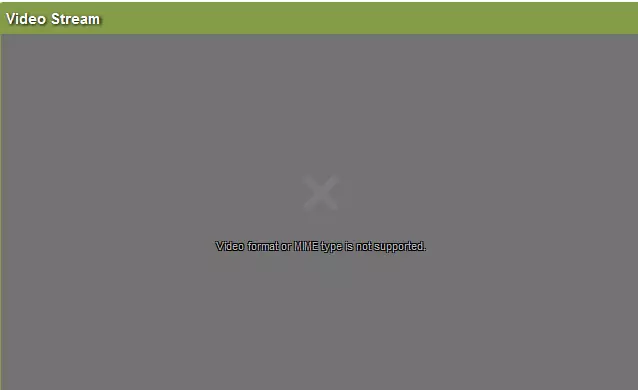
HTML5 Video RTSP Live Streams
Article Introduction:HTML5 and RTSP Live Video Streaming: A Comprehensive Guide
Researching RTSP live video stream playback using HTML5 reveals a key limitation: HTML5 doesn't natively support RTSP or RTMP formats. While displaying standard videos with HTML5 is straight
2025-02-27
comment 0
895

How to modify the playback control style of HTML video
Article Introduction:The default playback control style of HTML video cannot be modified directly through CSS. 1. Create custom controls using JavaScript. 2. Beautify these controls through CSS. 3. Consider compatibility, user experience and performance, using libraries such as Video.js or Plyr can simplify the process.
2025-04-30
comment 0
533
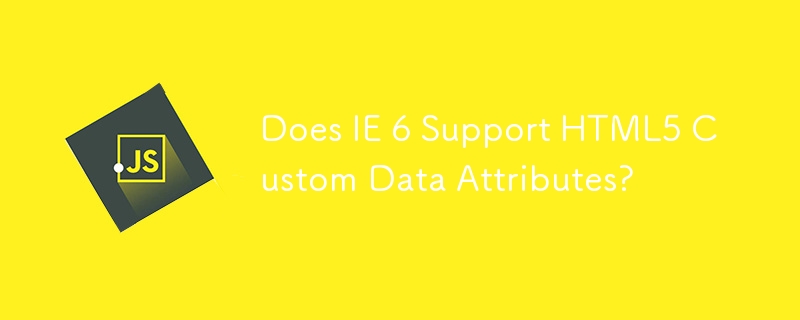
Does IE 6 Support HTML5 Custom Data Attributes?
Article Introduction:Can IE 6 Handle HTML5 Custom Data Attributes?The question arises whether custom data attributes introduced in HTML5 are functional in IE 6....
2024-11-16
comment 0
411

How to stream video using HTML5?
Article Introduction:To use HTML5 to stream videos in web pages, you can achieve the following steps: 1. Use tags to embed the video source, such as adding multiple tags to support multiple formats; 2. Set autoplay, muted and loop properties to achieve automatic playback and loop playback; 3. Control the playback behavior through JavaScript, such as using document.querySelector('video').play() to trigger playback; 4. Customize styles and controls, hide native control bars and use CSS to beautify the video area; 5. It is recommended to use MP4 format during deployment and consider streaming services to improve the loading experience.
2025-07-09
comment 0
521
















